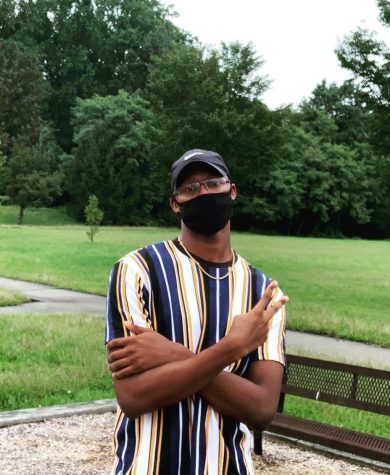The Problem with Our Police Force
“If You Only Have a Hammer, You Tend to See Every Problem as a Nail”
December 4, 2020
In 1986, Journalist Sydney J. Harris wrote “History repeats itself, but in such cunning disguise that we never detect the resemblance until the damage is done.” With current events bearing striking resemblance to those from decades past. It is our duty as children of history to learn from the past and work toward a better future.
The United States is a country with a long history of racism, violence, and systemic oppression. Our nation’s police forces started with the purpose of catching runaway slaves. This is the same police force that hosed and beat peaceful protesters fighting for basic civil rights in the 1960s. This is the same police force that participated in the Kent State shooting that killed four unarmed college students and injured nine others protesting the Vietnam War. And honestly, not much has changed since then, with police forces in 2020 brutalizing hundreds of protesters taking part in Black Lives Matter demonstrations. History will continue to repeat itself, and we will never uphold the nation’s idea of civility and justice if this behavior is not corrected.
To fix a problem, you first have to understand the problem. To do that we have to analyze the reasoning and tactics that have resulted in so many deaths and injuries from contact with law enforcement. In his article “How Police Training Contributes to Avoidable Deaths,” Seth W. Stoughton, a former police officer turned professor of law, says that “Rookie officers are taught what is widely known as the ‘first rule of law enforcement’: An officer’s overriding goal every day is to go home at the end of their shift. But cops live in a hostile world. They learn that with every encounter, every individual is a potential threat. They always have to be on their guard because, as cops often say, ‘complacency kills.’” After talking to several former and current police instructors, Stoughton found that the problem with American police lies in their training. If police officers are going into an encounter thinking everyone’s a threat, it’s no wonder that police brutality is such a problem.
According to the National Institute of Justice, “there is no single, universally agreed-upon definition of use of force.” While each state has its own specific policies regarding the use of force, most states rely on an officer’s judgment to apply force as needed. In a statement issued by the Maryland Police Training and Standard Commission, they say that the “Use of Force/Degree of Force policy should state that officers may use the force that is objectively reasonable and appears to be necessary under the circumstances in response to the threat or resistance by a subject.” The key-phrase here is “objectively reasonable.” What this means is that it’s ultimately up to the officer to decide when force is needed. With the number of allegations of police brutality growing it would make sense for police departments to establish a clear definition of “use of force.” Not only would this help victims of police violence, but would also protect officers who are wrongfully accused. Without this type of clarification any amount of force can be justified.
Our police officers cannot serve effectively when they see everyone in their community as a potential threat. The job of a police officer is dangerous and can result in officers being harmed in the line of duty, but that does not justify the deaths caused when officers put themselves before the public. American police forces have a history rooted in the enforcement of racial bias, and as such need to be reformed in a way that helps eliminate discrimination and prejudice. Police training needs to be more about engaging from a distance, to collect information and protect themselves. The U.S government needs to create clearly defined laws regarding the use of force, making it easier to punish officers that abuse their power. Officers need to stop being forced to make split-second decisions that result in so many tragic deaths.













































